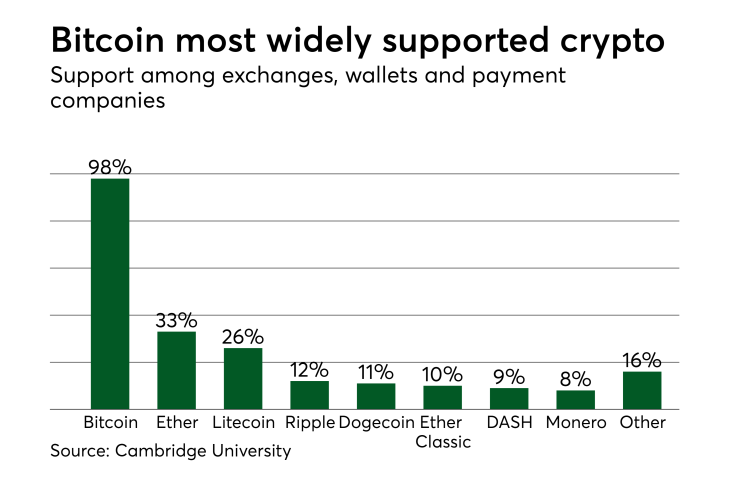There have been over 2,000 cryptocurrencies launched in the past two years, but there hasn't been large-scale participation. Part of the reason behind this is that crypto’s infamous volatility has hampered mass adoption.
But with a number of stablecoins, which are just that — stable — already on the market, it’s clear volatility is only one piece of the puzzle. For crypto adoption and investment to go mainstream, people have to be sure it has staying power and utility; one of the easiest ways to achieve this is to leverage the reputation and reach of brands that already have customers they hope to better serve.
Imagine if you used your credit card to order an item, and by the time it arrived, the effective price you’d paid had doubled; this is why most cryptocurrencies will not be usable for the everyday transactions necessary for mainstream adoption.

Enter stablecoins. By design, they hold their value over time with limited-to-no fluctuation, making them much better suited for everyday transactions. The crypto community is already behind them: Coinbase (valued at $8 billion) and Binance (the largest global crypto exchange) have both already issued their own stablecoins. Blockchain.com, a crypto industry pioneer, reports: “We’ve used stablecoins as almost the oil or the gas that makes this whole engine of a new consumer finance ecosystem possible. … Redefining consumer finance will require stable assets that can be used in the real world.”
Stablecoin Tether has been a top-10 cryptocurrency by market cap since its launch. The crypto community clearly recognizes the need for stablecoins as a store of value unaffected by the ups and downs that plague traditional cryptocurrencies.
But it’s not just existing crypto customers who need to get on board. Cryptocurrencies will never become a viable payment mechanism unless they move from the fringe to the mainstream. Many of the people sitting on the sidelines are waiting for assurances that cryptocurrencies are not some passing fad, for prices to stabilize, and for acquiring and using them to become easier. Stablecoins address the pricing issue. I believe that tying them to the brands people already know, love and trust will result in more staying power than the next decentralized stablecoin no one’s ever heard of, and there are few better positioned to provide a world-class user experience.
Several large companies have already recognized their customers aren’t the only ones who will benefit. While JPMorgan’s recently announced stablecoin will be used internally, it’s a validation of the advantages of branded cryptocurrencies (especially when you consider how critical Jamie Dimon has been of bitcoin). On the B2C side, companies having their own stablecoins won’t just reduce transaction costs compared to using the credit cards and PayPals of the world; it will also eliminate the reliance on these third parties.
Companies will be able to manage their payments process from end-to-end and be better equipped to leverage the resulting data for business optimization. In the early-adopter camp, Facebook is working on a stablecoin for WhatsApp. KODAKCoin, the coin for Kodak-branded blockchain project my own company put in motion, will be a stablecoin. Amazon’s introduced a blockchain offering and is toying with cryptocurrencies (telegraphed by several domain registrations) — there’s no doubt in my mind that when it does, it will be a stablecoin.
In addition to built-in users and name recognition, these companies prioritize customer experience by instinct. Cryptocurrencies are not only a cheaper and faster way to move money around than the status quo, they’re also easily programmed to optimize the loyalty/rewards experience. Anything issued by an established brand is guaranteed to be regulatory compliant and set up to avoid being designated as a security. They’re too big to fly under the radar, unlike the crypto projects operating in a gray area today, one eye always over their shoulder. This is what consumers and investors need to see to become crypto-confident.
With a pre-existing customer base, legal due diligence, benefits to both the company and their users, and value investors can count on, corporate stablecoins will be what finally brings crypto to the mainstream.





